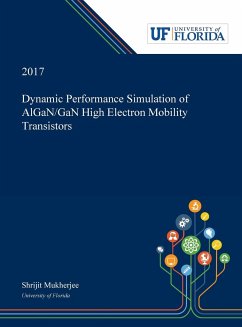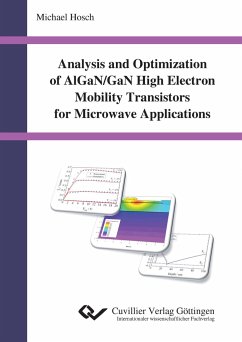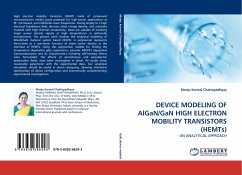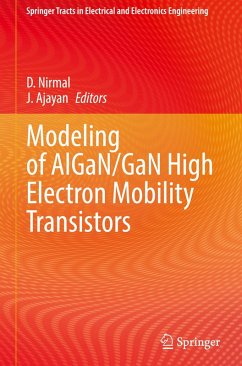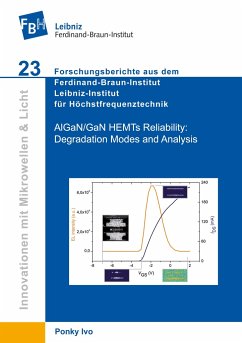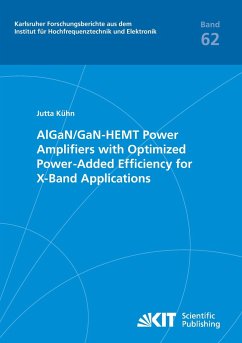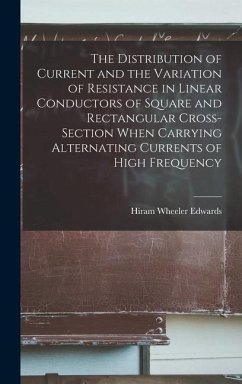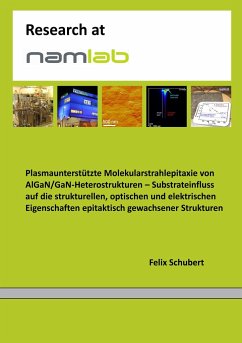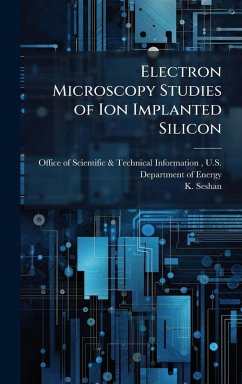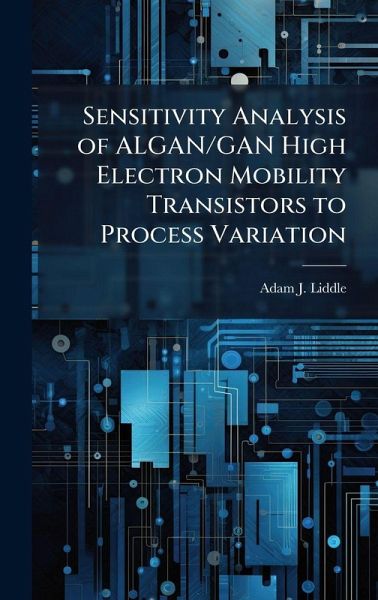
Sensitivity Analysis of ALGAN/GAN High Electron Mobility Transistors to Process Variation
Versandkostenfrei!
Versandfertig in über 4 Wochen
28,99 €
inkl. MwSt.
Weitere Ausgaben:

PAYBACK Punkte
14 °P sammeln!
A sensitivity analysis of AlGaN/GaN HEMT performance on material and process variations was performed. Aluminum mole fraction, barrier thickness, and gate length were varied 5% over nominal values to determine how sensitive simulated device performance was to changes in these 3 parameters. Simulated data was generated with the Synopsys TCAD software suite using a physics-based HEMT model. To validate model performance, simulated data was correlated with experimental data, which consisted of wafer epilayer characterization data as well as DC and small-signal RF device performance data from 1-26...
A sensitivity analysis of AlGaN/GaN HEMT performance on material and process variations was performed. Aluminum mole fraction, barrier thickness, and gate length were varied 5% over nominal values to determine how sensitive simulated device performance was to changes in these 3 parameters. Simulated data was generated with the Synopsys TCAD software suite using a physics-based HEMT model. To validate model performance, simulated data was correlated with experimental data, which consisted of wafer epilayer characterization data as well as DC and small-signal RF device performance data from 1-26 GHz.Trends were observed in the experimental data due to variations in the fabrication process. Epilayer data showed cross-wafer trends in sheet resistance, barrier thickness and Al mole fraction but didn't show any discernable trends in mobility or sheet carrier concentration. Maximum output current was the only measured performance metric that showed a strong trend across the wafers. This work has been selected by scholars as being culturally important, and is part of the knowledge base of civilization as we know it. This work was reproduced from the original artifact, and remains as true to the original work as possible. Therefore, you will see the original copyright references, library stamps (as most of these works have been housed in our most important libraries around the world), and other notations in the work. This work is in the public domain in the United States of America, and possibly other nations. Within the United States, you may freely copy and distribute this work, as no entity (individual or corporate) has a copyright on the body of the work. As a reproduction of a historical artifact, this work may contain missing or blurred pages, poor pictures, errant marks, etc. Scholars believe, and we concur, that this work is important enough to be preserved, reproduced, and made generally available to the public. We appreciate your support of the preservation process, and thank you for being an important part of keeping this knowledge alive and relevant.



